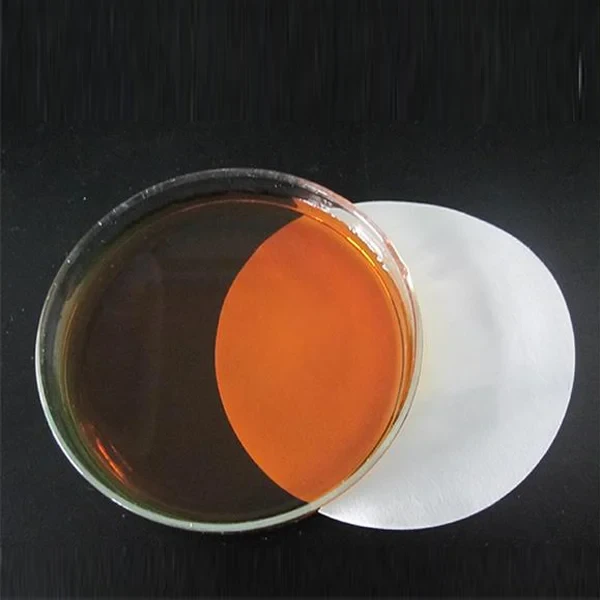
News
Ноя . 10, 2024 07:43 Back to list
Leading Manufacturer of High-Quality Chelated Fertilizers for Enhanced Plant Growth
The Importance of Chelated Fertilizers A Guide for Manufacturers
Chelated fertilizers are becoming increasingly essential in modern agriculture, providing a more efficient way to deliver nutrients to plants. As the global economy faces challenges such as soil degradation, nutrient deficiency, and the demand for sustainable farming practices, the role of chelated fertilizers is more critical than ever. This article explores the significance of chelated fertilizers, their manufacturing process, and their advantages for modern farmers.
What Are Chelated Fertilizers?
Chelated fertilizers are nutrient solutions that contain metal ions bound to organic molecules, called chelators. The chelation process protects the nutrients from interacting with other compounds in the soil, which can lead to immobilization and reduced availability for plants. This process enhances the solubility of essential nutrients like iron, copper, manganese, and zinc, making them more accessible to plant roots.
Manufacturing Process
The manufacturing of chelated fertilizers involves several steps to ensure high quality and efficacy.
1. Selection of Raw Materials The production process begins with sourcing high-purity metal salts and appropriate chelators. Common chelators include ethylenediaminetetraacetic acid (EDTA), diethylenetriaminepentaacetic acid (DTPA), and hydroxyethylidene diphosphonic acid (HEDPA). Each chelator has unique properties suitable for specific nutrients.
2. Chelation Reaction The selected metal salts are reacted with chelators in controlled conditions, often involving temperature and pH adjustments. This chemical reaction forms a stable complex, ensuring that the metal ions remain available for plant uptake.
3. Formulation and Quality Control Once the chelation process is completed, the mixture is formulated into various products, including granules, powders, and liquid solutions. Rigorous quality control tests are conducted to ensure that the chelated fertilizers meet the required standards in terms of nutrient concentration and stability.
4. Packaging and Distribution After passing quality control, the final products are packaged in appropriate materials to prevent contamination and degradation during storage and transportation. Proper labeling with application instructions and nutrient content is also crucial.
chelated fertilizer manufacturer

Advantages of Chelated Fertilizers
1. Increased Nutrient Availability Chelated fertilizers provide essential micronutrients in a form that plants can easily absorb. This is especially important in alkaline or calcareous soils where nutrients can become locked up.
2. Improved Crop Yields By enhancing nutrient availability, chelated fertilizers contribute to better plant health and growth, leading to increased crop yields. Farmers can achieve optimal results even in less-than-ideal soil conditions.
3. Environmental Benefits The controlled release of nutrients in chelated fertilizers minimizes the risk of environmental contamination. They reduce the chances of nutrient runoff into waterways, addressing concerns about water quality and ecosystem health.
4. Reduced Fertilizer Costs While chelated fertilizers may have a higher upfront cost compared to traditional fertilizers, their efficiency often leads to savings in the long run. Farmers can use smaller amounts of these fertilizers, translating to lower overall expenditure on nutrient inputs.
Challenges and Innovations
Despite their many advantages, chelated fertilizers are not without challenges. Manufacturers must stay ahead of regulatory changes regarding chemical usage and environmental impact. Additionally, continuous research and development are needed to create new chelators and formulations that can cater to specific crops and soil types.
Innovations in technology, such as nanotechnology and biotechnology, are paving the way for more advanced chelated fertilizers. These innovations promise improved nutrient delivery systems that can further enhance plant health while minimizing waste.
Conclusion
Chelated fertilizers represent a crucial tool for modern agriculture, offering a sustainable approach to nutrient management. For manufacturers, understanding the intricacies of the chelation process and staying abreast of industry trends is vital for producing effective products that meet farmers' needs. As agriculture continues to evolve, the importance of chelated fertilizers in promoting food security and environmental health will only grow.
-
Polyaspartic Acid Salts in Agricultural Fertilizers: A Sustainable Solution
NewsJul.21,2025
-
OEM Chelating Agent Preservative Supplier & Manufacturer High-Quality Customized Solutions
NewsJul.08,2025
-
OEM Potassium Chelating Agent Manufacturer - Custom Potassium Oxalate & Citrate Solutions
NewsJul.08,2025
-
OEM Pentasodium DTPA Chelating Agent Supplier & Manufacturer High Purity & Cost-Effective Solutions
NewsJul.08,2025
-
High-Efficiency Chelated Trace Elements Fertilizer Bulk Supplier & Manufacturer Quotes
NewsJul.07,2025
-
High Quality K Formation for a Chelating Agent – Reliable Manufacturer & Supplier
NewsJul.07,2025
